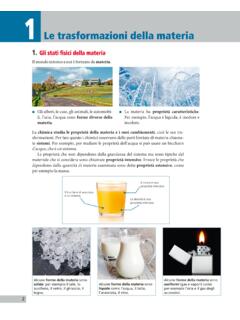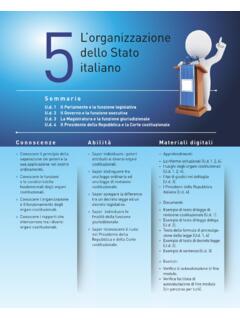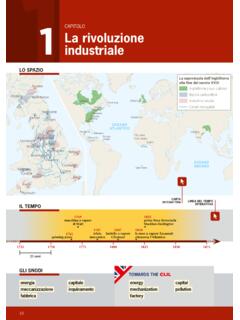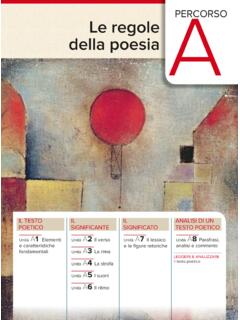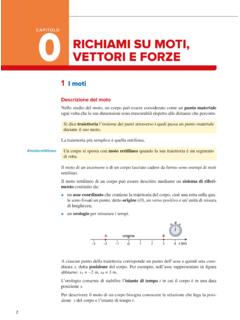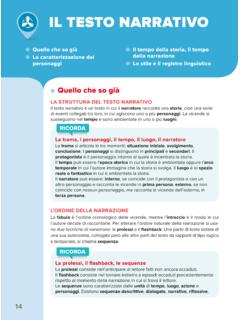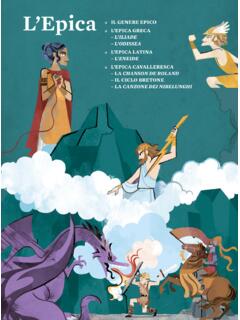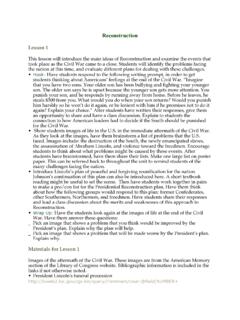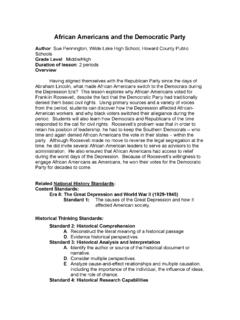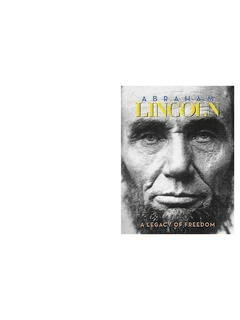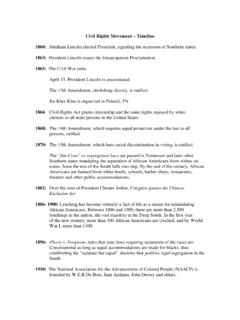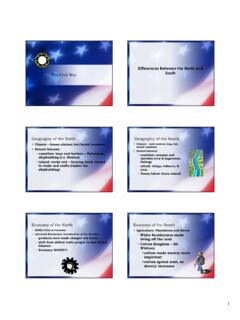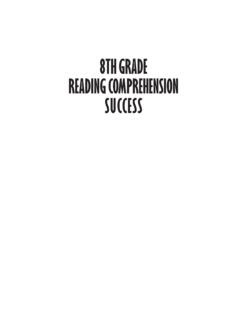Transcription of he Victorian Age - Zanichelli
1 Vic toria n AgeTIMELINE1837 Accessionof QueenVictoria1838 People s Charter callsfor social reforms anduniversal male suffrage1839-42 First Opium Waragainst China1840 Queen Victoriamarries PrinceAlbert of Saxe-Coburg-Gotha1845 IrishPotatoFamine1846 Repeal ofthe CornLaws1851 GreatExhibition1853-56 CrimeanWa r1856-60 SecondOpium War1857 IndianMutiny1859 Charles Darwin sOn the Originof Species ispublished1860 The Republicancandidate AbrahamLincoln winsthe presidentialelection1861-65 AmericanCivil War1863 First sectionof LondonUnderground,the world s firstundergroundrailway, opens1865 Assassinationof PresidentLincoln1867 Second ReformAct extends theright to vote tosome sectionsof the workingclasses1869 The Suez Canalopens and theUnion PacificRailroad connectsthe East and Westcoasts of the USA1870 EducationActestablishesthe basis ofelementaryeducation1877 VictoriabecomesEmpressof India1884 Third ReformAct extendsvoting to all malehouseholders1899-1902S e c o n d B o e r Wa r.
2 The British againstDutch settlersin South Africa1901 QueenVictoriadiesInteractive Queen Victoria Memorialin front ofBuckingham Palace, London, was unveiledby King George V in 1911 as the symbolic hubof the British Empire. The centrepiece by SirThomas Brock features the white marble figureof Queen Victoria surrounded by the symbolsof her reign: Truth, Justice and her is the gilded statue of Victory, withConstancy and Courage at her Pancras Stationin London is one ofthe wonders of Victorian engineering and amagnificent example of Gothic to connect London with England s majorcities, it was opened in 1868.
3 The renewal of thestation at the beginning of this century adaptedit to modern international trains and routeswithout altering its original OVERALL VIEWThe accession of QueenVictoria gave monarchy anew image of andoptimistic faithin progress were celebratedin the Great Victorian Age was a periodof widespread acceptance of a certainmiddle-class morality, mirroredin the royal family; however, in the lastdecades there was a growing senseof uncertainty and rest of Europe experienced revolutions in1848. There was serious discontent in Britain, butthe government was able to avoid revolution reforms satis edthe middle classes but the working class was still withouta voice, except for the Chartist building of anetwork of railwaysover the whole countrynot only distributed goodsbut also moved people andunited the anational leisure had madeliteracy a necessity andanational educationsystem provided foreign policy was basedonfree trade was forced to open toBritish trade.
4 And the CrimeanWar was fought to keep Russia outof the Ottoman Empire and the USA the gap between the industrial North andthe agricultural South widened as settlers moved westand the question of slave owning split the nation in theC i v i l Wa r. The Confederate South was defeated by theUnionist North andslaves were freed. Though free,black Americans faced poverty theVictorian AgetheBritishEmpireachievedits SKILLS18 The Cornell note-taking system19 How to answer oral questions20 How to write a commentary21 How to go from text to context22 How to give your personal response23 How to compare and contrast different authors24 How to develop a topic45.
5 The Victorian AgeHistory and CultureQueen VictoriaWhen Queen Victoria came to the throne in1837, almost 64 years and gave her name to anage of economic and scientific progress andsocial reforms. Her own sense of duty made herthe ideal head of a constitutional monarchy:she remained apart from politics and yetprovided stability. In 1840 she married PrinceAlbert of Saxe-Coburg-Gotha. They had ninechildren and their family life provided a modelof respectability. Prince Albert was a cleverman and Victoria relied more and more onhis advice and help.
6 In 1857 she gave him thetitle of Prince Consort, in recognition of age of reformThe 1830s had seen the beginning of what wastobecalledan ageofreform .TheFirstReformAct (1832), also called the Great Reform Act( ), had transferred voting privileges fromthe small boroughs, controlled by the nobilityand the gentry, to the large industrial towns,like Birmingham and Manchester. The FactoryAct (1833) had prevented children aged 9 to13 from being employed more than forty-eighthours a week, and no person between 13 and18 could work more than seventy-two hoursa week.
7 The Poor Law Amendment Act (1834)had reformed the old Poor Laws, dating fromElizabeth I, with the creation of workhouses,institutions where the poor received and religionLife in the workhouses was appalling onaccount of their system of regimentation, hardwork and a monotonous diet. The poor had towear uniforms and their families were apparent hard line was due in part to anoptimistic faith in progress and to the Puritanvirtuesofhardwork, behind the workhouses was that awarenessof such a dreadful life would inspire the poor totry to improve their own were mainly run by the was a strong force.
8 In industrialareas the nonconformist Churches, such asMethodists, promoted study and abstinencefrom 1838 a group of working-class radicalsdrew up a People s Charter demanding equalelectoral districts, universal male suffrage,a secret ballot, paid MPs, annually electedParliaments and abolition of the propertyqualifications for membership. No one inpower was ready for such democracy andthe Chartist movement failed. However, theirinfluence was later felt when, in 1867, theSecond Reform Act enfranchised part of theurban male working class in England and Walesfor the first time and, in 1872, the secret ballotwas introduced with the Ballot Irish Potato FamineBad weather and an unknown plant diseasefrom America caused the destruction of potatocrops in 1845.
9 Ireland, whose agriculturedepended on potatoes, experienced a terriblefamine, during which a lot of people died dawn of the Victorian Age1837-1861 VOCABULARY:POLITICS AND SOCIETY1M ATC Hthe highlighted wordsabout politics and society inthe text with their act of discipline over a to a piece of scarcity of to the right of from defining the rightsof a Franz Xaver Winterhalter,Queen Victoria,1859. London, Buckingham :READINGAND ORGANISINGINFORMATION2 BEFORE reading the text,look at the Cornell note-taking page in the Study Skillreference section and createa similar page to complete asyou SKILLThe Cornellnote-taking system, p.
10 4185many emigrated, mostly to America, in searchof a better life. The Irish crisis forced the PrimeMinister, Sir Robert Peel, to abolish the CornLaws in 1846. These laws imposed tariffs onimported corn, keeping the price of breadartificially high to protect the landed progressIn the mid-years of the 19thc e ntu r y, E ng l an dexperienced a second wave of industrialisationwhich brought economic, cultural andarchitectural change. While Europeanmonarchies were toppled by revolutions in1848, England avoided the revolutionary 1851 a Great Exhibition, organised by PrinceAlbert, showed the world Britain s industrialand economic power.
